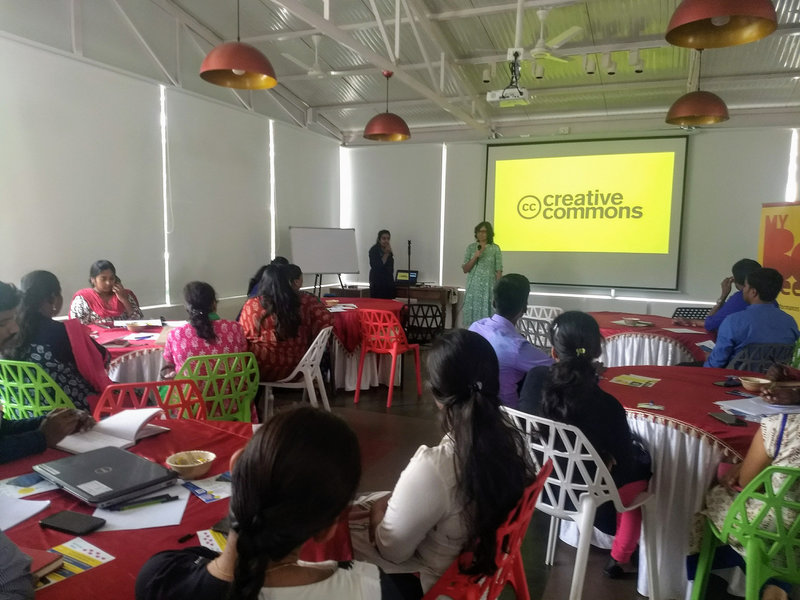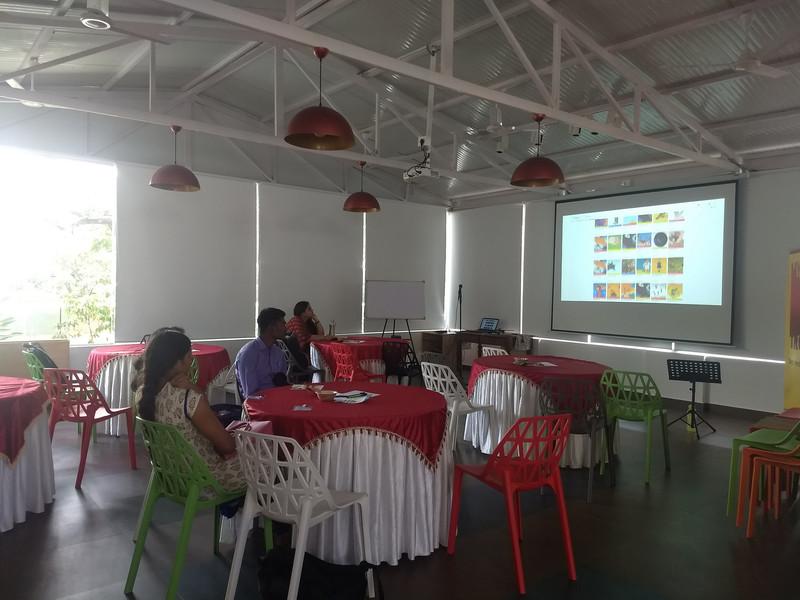StoryWeaver in Action: My First Workshop
Posted by Remya Padmadas on October 15, 2018
Bhavini Pant, Assistant Editor, StoryWeaver attended and helped conduct her first ever StoryWeaver workshop last month in Bengaluru. She shares her experience in this blog post.
Working behind the scenes of StoryWeaver can be unpredictable. On some days, things seem calm and almost monotonous. On other days, I can't believe I'm working for a tech platform given how things decide to work (or stop working) quite randomly. In between the zeros and ones, I'm certain there's a cheeky monster laughing at us when we splutter, "But.. but.. this isn't supposed to be happening!"
Unpredictable as the days may be, it can become a little routine spending time in front of a screen. When I was invited for my first StoryWeaver workshop on 6 September, I was happy for the chance to step out of office and meet new faces. This workshop was one of the many conducted by our Partnerships team to introduce StoryWeaver to educators. New recruits to StoryWeaver are also encouraged to participate to fully understand the platform and how new users experience StoryWeaver.
The venue was a large, but cosy space on the terrace of a building in Koramangala, Bengaluru. People from a wide variety of organisations had signed up for the workshop. They represented different aspects of education, technology and child welfare which made for an interesting assortment of participants. There was ChildFund India (who work with children as young as 1 year olds), Meghshala (who empower teachers to go beyond textbooks and provide quality education), eVidyaloka Trust (who empower rural India through quality education using technology), Gubbachi Learning Community (who work on bridge learning programmes for school drop-outs) and Caring With Colour (who work on arts integration and activity-based learning). Some participants had travelled all the way from Mysore (Pratham, Learning Spaces) and Hyderabad (Aga Khan Foundation) for the workshop!
As participants started trickling in, some confident, some a little nervous I was reminded of my previous job where I would take workshops with educators on a fiction-reading program for school children. Teachers are almost unthinkingly expected to take the lead in a classroom. When I was teaching, I often missed the luxury of learning that comes with being a student. I imagine that some of the participants felt the same, for they welcomed the chance to be learners again: asking questions, developing and sharing their insights, putting pieces together.

Initially when one of the facilitators began demonstrating StoryWeaver by telling us a story from the platform, my attention was drawn to her narration. And then, quite by chance, my gaze slid to the participants. I was thrilled to see them smiling along with the story. My heart smiled with them. It felt wonderfully uplifting to see participants' eyes light up, to see them laugh quietly during the funny bits. When a Read-Along story was demonstrated, lots of participants shared different ways they could anticipate educators using the feature. It was heartening to see educators explaining cross-disciplinary uses for Read-Along stories – that while the storyline could be used to introduce say, a mathematical concept to children, the narration and highlighted words could be used to demonstrate pronunciation, grammar and other language concepts.
Once the participants began working on their own stories, the space was buzzing with questions, suggestions and observations. Translated stories, in particular invited much discussion among the teachers. They debated the choice of words and their reasons for why a certain word should or should not be used. Eventually, some participants chose to translate the same story on their own as part of the exercise on creating a story!
The workshop was a good chance for me to cleanse my content manager palate. While we’re constantly working on increasing content on StoryWeaver for our users, I was able to see how a person new to StoryWeaver could be overwhelmed at the prospect of browsing through 9,000+ stories. We’re continually trying to make the experience of searching for stories faster and easier. Apart from filters, the teachers were also introduced to Lists - a section on StoryWeaver which has curated sets of stories based on areas which are relevant both in the classroom and outside it. Bright and colourful Category Cards (which appear when you scroll down the home page a little) also help organise all stories on the platform. Since the categories reflected subjects (eg. History & Culture) as well as broad themes (eg. Humour), we could see educators nodding and smiling satisfactorily.
In the end, when participants were filled with glee and pride to see their published story showing up on ‘New Arrivals’, we shared their thrill of creating something original.
As a former teacher, it was deeply moving for me to see educators taking control of the kind of material they would like to use and create for their children. Teachers are often expected to effect far-reaching changes in children but are not supported or encouraged as much as they need to be. Hopefully, StoryWeaver can be a space that addresses this imbalance while being easy and fun to use.